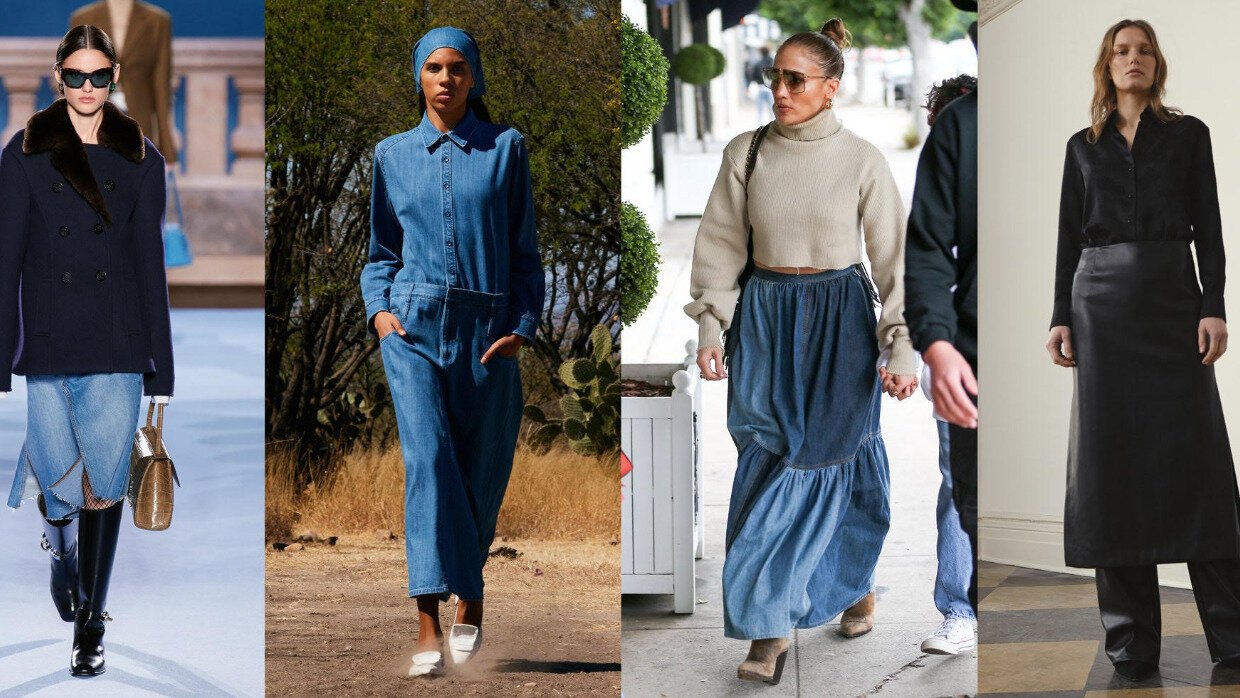 Vampire Weekend's Surprising Jewish Stories
Vampire Weekend's Surprising Jewish Stories


3 min read
The fashion magazine dubbed today’s hottest look as “Torah-teacher aesthetic.” What’s going on?
This year’s fashion shows unveiled some decidedly retro looks on the runway: longer hem lengths, sensible loafers, high necklines, and opaque tights all made appearances. You may call it “classy.” Vogue used a different description: “Torah-teacher aesthetic.”
“What is Torah-teacher aesthetic?” asked Vogue writer Mattie Kahn, who attended Jewish schools growing up. She playfully described a typical teacher from her youth: “She has brown hair with a wave. She wears denim skirts or pleated skirts or sometimes pencil skirts. She likes black tops and white tops. When she is feeling wild, she breaks out a deep blue sweater with a cowl collar. She has sensible shoes. There are variations on her, but she is unmistakable….”
The look has become ubiquitous. Khan singles out celebrities like Jennifer Lopez, Katie Holmes, and the Kardashians who embody this pared-down, understated style. She claims that Miuccia Prada would qualify for the Torah-teacher aesthetic too “if she were a smidge less elegant.” (Personally, I think Miuccia Prada has the Torah-teacher aesthetic down pat – all classy midi-length skirts and high-quality cashmere sweaters.)
 Miuccia Prada, dressed for a Jewish Day School
Miuccia Prada, dressed for a Jewish Day School
Many women choose to dress modestly, but the Torah-teacher aesthetic has a decidedly modern edge: a certain coolness and indifference to the latest trend. “If it has to be fussed with or zipped over shapewear, it’s not Torah-teacher aesthetic,” Khan notes. “Roughing it up is required.” Perhaps because so many religious Jewish women hold down busy jobs, are on the go all day long, and often live in high-fashion cities like New York, London, Paris and LA, they’ve developed a chic, sophisticated style all their own which incorporates longer skirt lengths and sleeves, and higher necklines. Dark skirts are popular. Minimal jewelry is in. Now, this elegant look has become the latest trend.
The prophet Micah captured a key Jewish value when he advised us to “Walk modestly with your God” (Micah 6:8). The Jewish ideal of modesty, called tzniut in Hebrew, is to behave with dignity and modesty in all ways. It’s not just about length of skirts and sleeves; it’s about recognizing your inner worth and living in a dignified manner that affects all aspects of your life. And that’s why tzniut applies equally to men.
The foundation of modesty stems from realizing the essence of who you are is a soul, not a body. A chiseled man walking down the street half naked is calling for attention to his body. It’s your inner virtue, not your looks, that should shine through.
I got a real-life lesson about dignified dressing when I brought my kids to Washington DC for a vacation. As we walked through the busy streets near the National Mall, office workers strode all around us, hurrying on their way to meetings. Female workers sported smart skirts and tailored cardigans and jackets. “Are all these women Jewish?” my young son asked, amazed. Attending a Jewish school, he was well acquainted with the “Torah-teacher aesthetic” that the government workers and political aides were rocking.
I told him that most of the women weren’t Jewish, they simply had important jobs and dressed in a manner that reflected their dignity. That’s the Jewish concept of modesty in a nutshell. And now with the added plus of being fashionable chic too.
